From Jail to Late-Night Salvation?
Believer’s Edge Shines Welcoming Light on Santa Barbara County Jail’s Departing Inmates
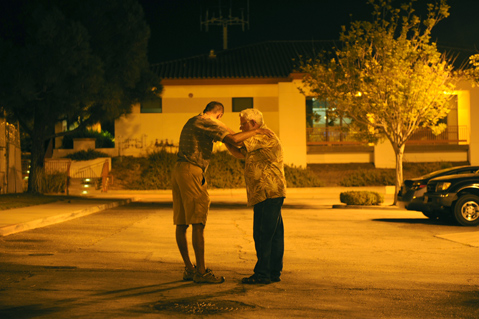
The security door slammed shut with a bang and, with that, D.J. was out. A tad disheveled with a light swagger and a heavy tan, D.J. rolled his suitcase toward the double doors of the jail’s lobby, his bleary eyes eager to escape from the place he’d been booked into nine hours earlier.
Two men standing near the couches intercepted D.J.’s gaze and startled him by offering a cup of coffee. What about a bag of potato chips? A bottle of water? D.J. perked up at the water, sat down, and frantically rummaged through his luggage in search of his cell phone. The men asked if he needed a ride downtown, then handed him a coupon for a free McDonald’s breakfast; he accepted and chugged the water. With a shrug of his shoulders and a nervous chuckle that would accompany many of his other admissions, D.J. said he had a drinking problem.
Listening intently, the men learned that, prior to moving to Santa Barbara in 2008, D.J. held a paramedic job for 12 years, earned a degree in criminal justice, and then worked as a ski patroller in Colorado. Before being arrested, he said with a sly smile, he’d been dating a woman who worked at the Bacara. But benders and consequent stints in the hospital and jail changed things. He was now homeless, jobless, and “bottomed out,” picked up that afternoon for disorderly conduct. “It’s weird you guys are out here,” he said, looking up at Tim Adams, Maeton Freel, and Steve Wagner. It was approaching midnight on Wednesday, July 23. It was their first night there.
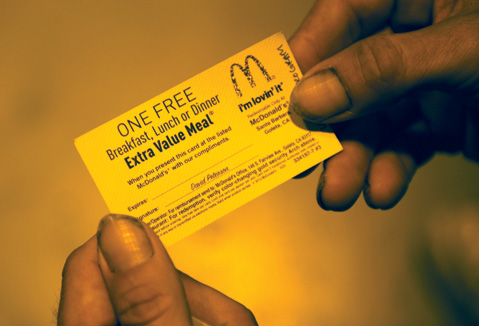
Adams, Freel, and Wagner, along with 30 other volunteers, are members of Believer’s Edge, an all-male religious group that meets on Tuesday mornings. Last fall, the believers offered to man the lobby of the Santa Barbara County Jail to provide inmates discharged in the late-night hours — a worrisome but often mandated practice — with snacks, conversation, and connections while they wait for rides and figure out their next moves.
The nascent program isn’t without concerns — its level of religiosity, its lack of female volunteers — but many contend it could lift people up when they’re at their lowest. The men behind Believer’s Edge proposed their services — called the Light Brigade, a poem-inspired spin-off of a program called Lights On in Orange County — at the same time the Sheriff’s Office began looking at ways to prevent people from cycling in and out of the jail. But recidivism rates plant cynical roots, so Believer’s Edge skeptics, supporters, and jail staff are wondering, one, can it really help? And two, what could it hurt?
For D.J., it meant the difference between walking down a dimly lit, sidewalk-less Calle Real and getting a ride from Adams to Faith Baptist Church, where D.J. knew the pastor. “Come get a coffee with us Tuesday morning,” Wagner suggested to D.J. before he left. Promising to show up, D.J. shook his head and laughed. “If I didn’t get arrested, I probably would have drank myself to death,” he said. “This might have been a blessing in disguise.”
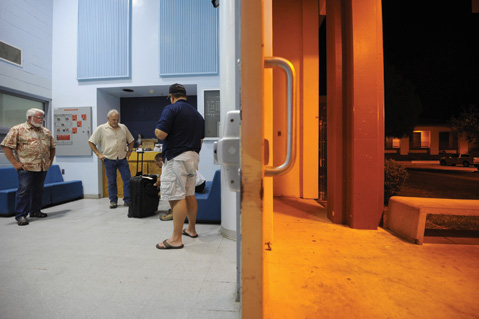
Friendly Face in Dark Place
The genesis of Believer’s Edge came seven years ago when seven men from Calvary Chapel created an offshoot group where men from across a dozen area churches could partner their religious beliefs with their professional goals. Since then, the fellowship — a registered 501(c)3 nonprofit organization — has grown to include about 100 men who meet every Tuesday at 6:30 a.m. at Christ Presbyterian Church downtown. For an hour, the men sip coffee, sing hymns, say prayers, and seek career guidance from each other and guest lecturers. (Speakers have included Santa Barbara Police Chief Cam Sanchez and area McDonald’s tycoon David Peterson.)
One of the founders, Tom Doty, serves as the group’s main point man. A graduate of Brooks Institute, Doty produces videos of the Tuesday services, which reach 7,000 people worldwide through the group’s website. Easygoing and sporting a Believer’s Edge baseball hat, Doty speaks frequently about the importance of “marketplace guys” who function as thermostats setting the temperature rather than thermometers soaking it up. A full-time volunteer for the group, he was raised in a Christian family, Doty said, but it wasn’t until a “large hiccup” befell his business in 1989 that he became closer to God. “You can be raised in a garage; it doesn’t make you a car,” Doty said, relaying the story of how he “fell flat on my face and lost everything” and spent months paying off his debts. Then, in 1989, he met John Mullen.
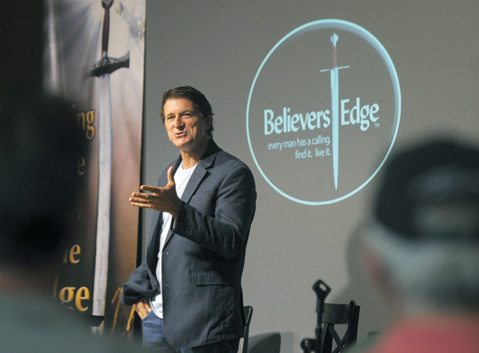
Partial to dark-wash jeans, V-neck shirts, and blazers, Mullen co-owns Hoffmann Brat Haus on State Street. He wasn’t raised in a churchgoing home, so while he was serving as the president of his fraternity at Cal Poly in the 1970s, he started “looking for more,” eventually finding it on a trip to Mozambique, where he realized he “wanted to devote myself to those who were broken.” In 2007, Mullen, Doty, and their friend Hank Bowis started hosting the meetings that became Believer’s Edge.
The spark for the Light Brigade came from Mullen’s work as a jail chaplain. He’d been counseling a 24-year-old heroin addict who expected to be released from custody in the afternoon but didn’t make it out until 1:45 in the morning. Concerned with what might happen in such a scenario, which turned out to be a common protocol statewide, Mullen discovered the Lights On program in Orange County. Last fall, he presented a similar idea to the Sheriff’s Office and Ivan Vorster, the jail’s community outreach coordinator.
On July 1, after bureaucratic back-and-forth with the county over legal concerns, Believer’s Edge inked a contract with the Sheriff’s Office. Though he hasn’t done jail ministry before, Doty does recall being “a young kid once” who spent a night in jail, a memory that powers his current mission. “It was a very scary place,” he said, haltingly. “To know there’s somebody friendly to be there when you get out …”
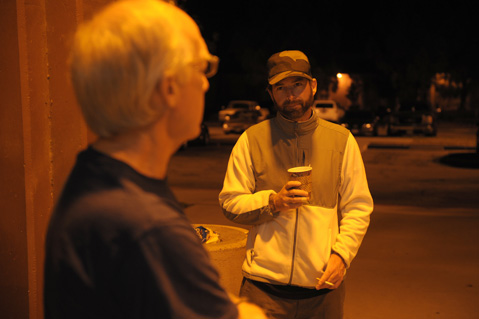
Late-night Limbo
Although most releases occur in the light of day, late-night releases sometimes cannot be avoided, said Sheriff’s Office spokesperson Kelly Hoover. The jail must release people on the day that the court orders, but that often comes last in a tightly prescribed schedule that requires staff to schlep inmates to and from Santa Maria for court hearings, which often don’t end until late afternoon. In other cases, like D.J.’s, people arrested for public intoxication in the afternoon get discharged upon sobering up eight or so hours later. Complicating matters further, statewide “realignment” — a 2011 law otherwise known as AB 109 that reassigned state prison inmates — means the county jail’s population is larger than ever before.
In January 2015, a new California law aims to improve the situation by allowing inmates to request up to 16 extra hours of custody in order to be released during the day. Whether inmates would stay is unknown. The opening of the North County Jail in 2018 could also alleviate after-hours discharges, as the jail-to-court commute will shorten.
Santa Barbara County isn’t alone in late-night releases nor the first place where a nonprofit rose to tackle the issue. Inspiring Believer’s Edge was the Society of St. Vincent de Paul, a Catholic organization whose Santa Ana chapter started serving the Orange County Jail’s late-night releases in 2006. Dubbing their program Lights On, they set up a trailer across the street from the facility and started offering coffee, snacks, phone calls, and information on available resources. Every weekday from 9:30 p.m. to 3:30 a.m., two or three volunteers — men and women — run the trailer. Last year, said executive director Rich Gorham, Lights On served about 11,000 people, with Mondays seeing release rates of 50-60 people per night.
Santa Barbara’s flow is much less but still steady. On each of the first three nights of Believer’s Edge’s program in July, nine people were released; on the fourth night, ahead of Fiesta, the number jumped to 14. “We want to introduce them to a different way of life,” said third-night volunteer Bob Mangus, a blue cross stitched onto the chest of his button-up shirt. “They made a major mistake. For every guy that turns his life around, it’s a big deal — not only for their soul but for society.”
Recently, as directed by AB 109, the state started funding the county jail’s six discharge planners, who connect inmates with health care, substance-abuse programs, mental-health treatment, and housing. But according to Deputy Chief Probation Officer Tanja Heitman, the arrestees who go in and out of the jail quickly — because their charges are dropped, or their bail gets posted, or their drunken stupor wears off — are least likely to see those planners, so the 24-year veteran thinks Believer’s Edge can fill that gap into the future. “There’s definitely a place for that,” she said. “We just need to give them an opportunity to get up and running.”
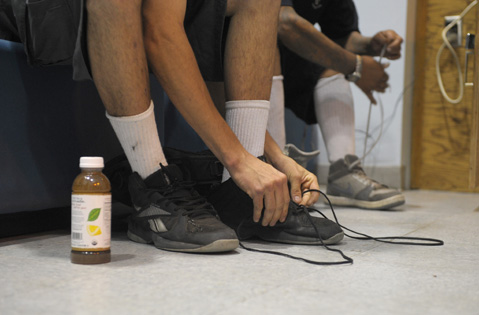
Kinks and Conversion
During the first four nights of the program, the Light Brigade — which operates solely in the jail’s lobby, with a special cabinet to hold their stuff — worked out many kinks. On the third night, a couple expecting a baby in four months’ time were discharged together, having both been arrested a few days earlier for a domestic disturbance. They accepted drinks and snacks — and a Believer’s Edge pamphlet for the boyfriend — but seemed most grateful for the volunteers’ help in finding a ride home.
That proved to be a bit of a struggle, as the volunteers had trouble navigating the rules of the preexisting jail-rides program, which provides taxi transportation to those who demonstrate an inability to pay, like this couple. But the cab company only gives rides to designated places, which the Light Brigade members didn’t know until the driver patiently explained the rules to them. On other nights, the volunteers tried to save the program money by maximizing the number of riders per trip. Peter Marin, the man behind the taxi program, said he has tried to meet with the group several times to no avail; Believer’s Edge leaders said they are eager to find ways to best collaborate.
What could be the group’s biggest hurdle is how to help people whose faith is already high but whose luck is lower. When Ronnie Deer was released on the third Light Brigade night, he told the volunteers — always good at listening, never overbearing — how his previous 32-month stint in solitary confinement at the Ventura County Jail saw him read the Bible three times. “I wouldn’t trade that experience for nothing,” Deer said. On the fourth night, Deer returned, this time awaiting his new wife’s release. They were arrested 10 days after their wedding, when an officer found narcotics — prescribed, Deer said, just not in the prescription bottle — in their car.
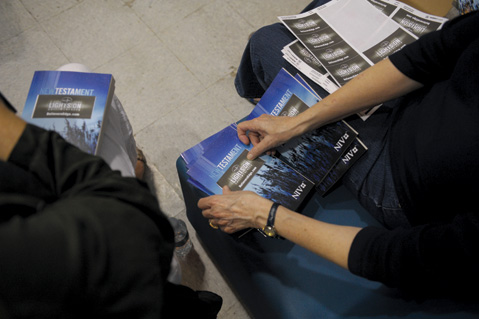
A Latino man, released the night before, guzzling his bottled water and wobbling on his just-returned skateboard, told Mangus how his addict friends turned their lives around after turning to religion. “The white man with the white hair — he knows what he’s talking about,” he said, admitting he was on probation in multiple counties but expressing his thanks for the religion-rich conversation.
Though America constantly questions how much religion should be involved in government institutions like jail, that debate didn’t arise at all on the first four nights of the Light Brigade program. Not one of the released inmates expressed offense at the group’s religious undertones, which only became overtones if the person referenced religion first. On the fourth night, the volunteers played soft gospel music, prompting one little girl waiting for a relative to dance around. Most were eager to chat with the believers after gulping in the fresh air, dragging on a cigarette, or re-lacing their sneakers.
As stated in the contract with the Sheriff’s Office, Believer’s Edge is to provide only “neutral and nonideological support” to the inmates and has insured itself in the event of — and indemnified the county against — any potential legal claims. Recruiting new believers isn’t the group’s primary goal. “I think people are attracted to those who care, and those who love, and those who are reaching out to them and see them as having great value,” said Mullen, pointing to a St. Francis of Assisi quotation that values actions over talk: “Preach the gospel, and if necessary, use words.”
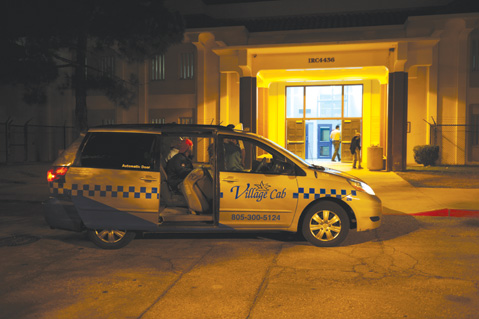
Good Deeds Done
Through December, when the contract is up for renewal, that’s what the Light Brigade will be doing. The volunteers are camping out in two shifts of two people on Wednesdays and Thursdays between 10 p.m. and 4 a.m., the nights most likely to see the most people released after-hours. (The shifts work especially well for the members who suffer from insomnia, Doty said with a laugh.) They want more female volunteers — only one has officially signed up — as Doty believes that will make female releasees feel more comfortable.
Volunteers must attend training seminars hosted by the Sheriff’s Office and Common Ground Santa Barbara, which emphasized the bevy of resources in Santa Barbara County. “We want to be there to give these guys a hand up so they can go and start their life,” said Doty, who envisions Believer’s Edge members who own businesses one day offering apprenticeships to the released.
Financially speaking, the Light Brigade looks solid. Where Gorham of Orange County said funding for his $40,000-a-year program is always an issue, Believer’s Edge benefits from meal vouchers, food, and drinks donated by McDonald’s and Jordano’s and cushiony lobby chairs paid for through the jail’s Inmate Welfare Fund. Believer’s Edge — which, according to tax documents, reported nearly $67,000 of donations in 2012 — is covering the cost of its liability insurance, the cell-phone bill, and the Keurig coffeemaker.
Chief Deputy Laz Salinas, a 26-year veteran of the Sheriff’s Office who took the reins of the jail’s custody operations 15 months ago, said he recognized the need to make the lobby more comfortable and that bringing in Believer’s Edge fits with the department’s recidivism-reducing goals. He noted big plans (the reentry wing planned for the North County Jail) and small changes (working more closely with the taxi system) that could help over time. With Believer’s Edge’s program, there may not be a measurement — at least not yet — for success or failure, but the department is willing to wait and see what happens. Salinas explained, “I guess the metric would be … how many people were able to make a connection with the outside … and turn things around.”
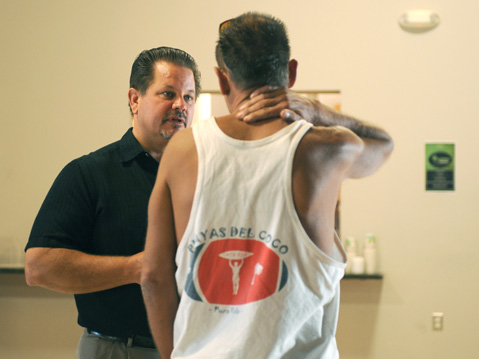
Tracking the Flock
Six days after he was released, D.J. made good on his promise: He showed up to the Believer’s Edge service at 6:30 on a Tuesday morning. He stayed in the back row with a friend, sipping coffee and remaining seated while the other men stood to sing and pray. He got a shout-out to the crowd from Steve Wagner, who had picked him up that morning so that D.J. would make the meeting on time. “I’m stoked to have you here, D.J.,” Wagner said.
Chatting afterward, Wagner and D.J. discussed what he could do next. Wagner plugged the Rescue Mission, telling D.J. he could help him apply for a spot that Friday. D.J., alcohol lingering on his breath and tears forming in his eyes, said he was ready to detox and that he wanted to keep coming to the Believer’s Edge meetings. “I can only go up from here,” he said. “I just want to be a success story.”
D.J. didn’t show the following Tuesday morning but told Wagner — a warm, jockish “marketplace guy” who spent 11 years as the public works director for the City of Goleta and is now second-in-command at the Goleta Sanitary District — that he was looking into a three-month sober-living program in Santa Maria. Wagner has called D.J. a few times since but has yet to hear back.
“I can pray for him and hope the best for him,” said Wagner, reiterating the Believer’s Edge idea that people ultimately have to want to make a major change themselves. “I can hope, but I don’t know.”



